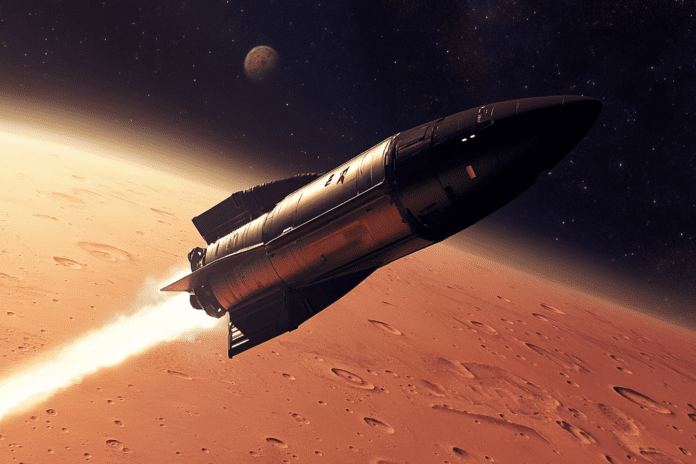Elon Musk, the visionary behind SpaceX, has long captivated the world with his bold dream of making humanity a multiplanetary species by colonizing Mars. Musk’s ambitious plan, which began as a lofty goal, has since evolved into a structured roadmap that SpaceX is actively pursuing through technological innovations like the Starship spacecraft. But can we really make it to Mars? If so, when? And what are the challenges that could stop or delay Musk’s dream?
In this blog post, we’ll explore the feasibility of going to Mars, the technological, biological, and logistical hurdles, and a realistic timeline for when humanity could set foot on the Red Planet. We’ll also consider whether Mars colonization is truly achievable, or if it remains a futuristic fantasy.
Table of Contents
- Why Mars?
- Elon Musk’s Vision: How SpaceX Plans to Get Us There
- Technological Feasibility: Is SpaceX on Track?
- Challenges of Going to Mars
- Distance and Duration of the Journey
- Life Support and Sustainability
- Radiation and Health Risks
- Landing and Habitat Construction
- Mars Colonization: Can We Build a New Home?
- When Can It Happen? A Realistic Timeline
- Can It Happen in the First Place?
- Conclusion: Will Musk’s Dream Become Reality?
1. Why Mars?
Among all the celestial bodies in our solar system, Mars is the most appealing candidate for human colonization. Its proximity to Earth and relatively Earth-like conditions (compared to other planets) make it an ideal target.
Mars has:
- A day length similar to Earth’s (about 24.6 hours).
- Polar ice caps, suggesting the presence of water (albeit frozen).
- Terrain that could potentially support human infrastructure and agriculture.
Unlike the Moon, which lacks an atmosphere and has more extreme conditions, Mars offers the potential for longer-term habitation. However, it remains far from hospitable, and significant challenges must be overcome before humans can establish even a semi-permanent presence there.
2. Elon Musk’s Vision: How SpaceX Plans to Get Us There
Elon Musk’s plan to send humans to Mars revolves around the Starship—a fully reusable spacecraft designed to carry up to 100 passengers to space, including to Mars. SpaceX has already made significant progress in developing Starship, having conducted multiple test flights, including orbital launches.
Key Aspects of Musk’s Mars Vision:
- Starship: Capable of interplanetary travel, reusable, and designed for long-duration spaceflights.
- Refueling in Orbit: Musk envisions refueling spacecraft in Earth’s orbit to minimize the need for massive rockets.
- Mars Base Alpha: Initial Mars landings would focus on establishing a small base, which would serve as the foundation for future expansion.
Musk has frequently stated that the goal is to land humans on Mars by the mid-2030s, though many in the aerospace community view this timeline as optimistic.
3. Technological Feasibility: Is SpaceX on Track?
1. Starship and Reusability
Starship’s reusability is key to Musk’s plan for cost-effective interplanetary travel. Traditional spacecraft are disposable, making each launch prohibitively expensive. By making rockets fully reusable, SpaceX aims to drastically reduce the cost per flight, making Mars missions financially feasible. Starship prototypes have successfully completed several test flights, although challenges remain with reliability and orbital re-entry.
2. Heavy Lift Capability
Starship, coupled with the Super Heavy booster, is designed to carry large payloads—up to 100 tons—into space. This capacity is critical for Mars missions, as massive amounts of cargo (food, equipment, habitats) will need to be transported.
3. Life Support Systems
Although SpaceX has excelled in propulsion and spacecraft design, life support systems—necessary to sustain humans for months during the journey—remain an area where more development is needed. Musk has not fully detailed how SpaceX will manage issues like oxygen recycling, waste management, and food production during long-duration spaceflights.

4. Challenges of Going to Mars
While SpaceX is making great strides in technology, several major challenges remain that could delay or even derail a Mars mission.
1. Distance and Duration of the Journey
A trip to Mars takes between 6 and 9 months, depending on the alignment of the planets. During this time, astronauts will be confined to a spacecraft, isolated from Earth. SpaceX needs to ensure that the spacecraft can safely support human life for this extended period, providing:
- Adequate radiation shielding.
- Reliable life support for air, water, and food.
- Solutions for mental and physical health over long isolation periods.
2. Life Support and Sustainability
Mars has no breathable atmosphere (96% carbon dioxide), and temperatures can plunge to -80 degrees Fahrenheit (-60°C). Sustaining human life will require advanced technologies, including:
- Oxygen production, possibly through electrolysis of Martian water.
- Habitat pressurization to create Earth-like living environments.
- Energy production, likely using solar panels or nuclear reactors, given Mars’ distance from the Sun.
3. Radiation and Health Risks
Space presents significant radiation exposure risks, and Mars lacks a protective magnetosphere like Earth. Prolonged exposure to cosmic radiation during the journey and on the Martian surface could increase the risk of cancer, nervous system damage, and other health issues. Shielding astronauts from this radiation will be crucial but remains an unsolved challenge.
4. Landing and Habitat Construction
Landing on Mars is notoriously difficult due to its thin atmosphere, which offers little assistance in slowing spacecraft. The Curiosity rover’s landing used a combination of parachutes and retro-rockets, but landing a large crewed spacecraft will require new solutions.
Once there, building habitats is another daunting challenge. Musk’s vision of in-situ resource utilization (using Martian materials to build structures) is promising, but technologies like 3D printing using Martian regolith are still in the experimental phase.
5. Mars Colonization: Can We Build a New Home?
While landing a few astronauts on Mars is feasible within the next couple of decades, long-term colonization is an entirely different challenge. To establish a permanent settlement, we must overcome obstacles such as:
- Food production: Growing food in Martian soil or hydroponic systems.
- Water sourcing: Extracting water from ice deposits.
- Creating a self-sustaining colony: Reducing reliance on supplies from Earth, which would take months to arrive.
The idea of terraforming Mars—modifying its environment to be more Earth-like—is often discussed but would require centuries of effort, if it’s even possible.
6. When Can It Happen? A Realistic Timeline
Elon Musk has repeatedly mentioned a human landing on Mars as early as 2030. While SpaceX’s progress with Starship is impressive, many experts believe a crewed Mars mission is more likely by the late 2030s or 2040s, due to the significant challenges that remain in:
- Perfecting life support systems for long-duration missions.
- Developing reliable landing and takeoff technologies for Mars.
- Addressing health risks like radiation exposure.
Realistically, even after humans land on Mars, building a permanent, self-sustaining colony could take decades to centuries.

7. Can It Happen in the First Place?
While reaching Mars is feasible from a technological standpoint, Mars colonization is far from certain. Major hurdles include:
- International cooperation: While Musk’s SpaceX is spearheading efforts, successful Mars missions may require collaboration between nations and agencies like NASA, ESA, and possibly China.
- Financial challenges: Funding such a monumental mission is expensive, and while SpaceX is working on reducing costs, sustaining a Mars colony will require continuous investment.
- Ethical and philosophical questions: Should we invest in colonizing another planet when Earth itself faces pressing challenges like climate change and poverty? There are ongoing debates about whether resources would be better spent fixing Earth before focusing on Mars.
8. Conclusion: Will Musk’s Dream Become Reality?
Elon Musk’s vision of sending humans to Mars is ambitious, but it’s no longer science fiction. The technologies needed for a Mars mission—like reusable rockets, advanced propulsion systems, and life support technologies—are already in development. However, significant challenges remain, particularly in ensuring crew safety and establishing a sustainable presence on Mars.
While a human landing on Mars may occur by the late 2030s, colonizing Mars and building a thriving Martian city will likely take much longer. Whether we can overcome the myriad of challenges—technical, financial, and ethical—remains to be seen. For now, Musk’s dream is moving closer to reality, but the road to Mars will be long and filled with uncertainty.



